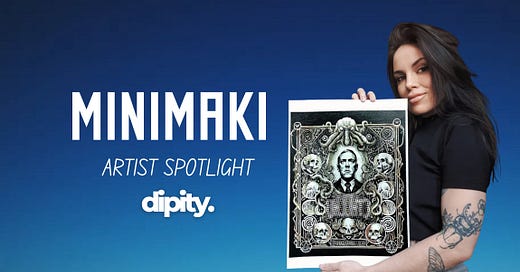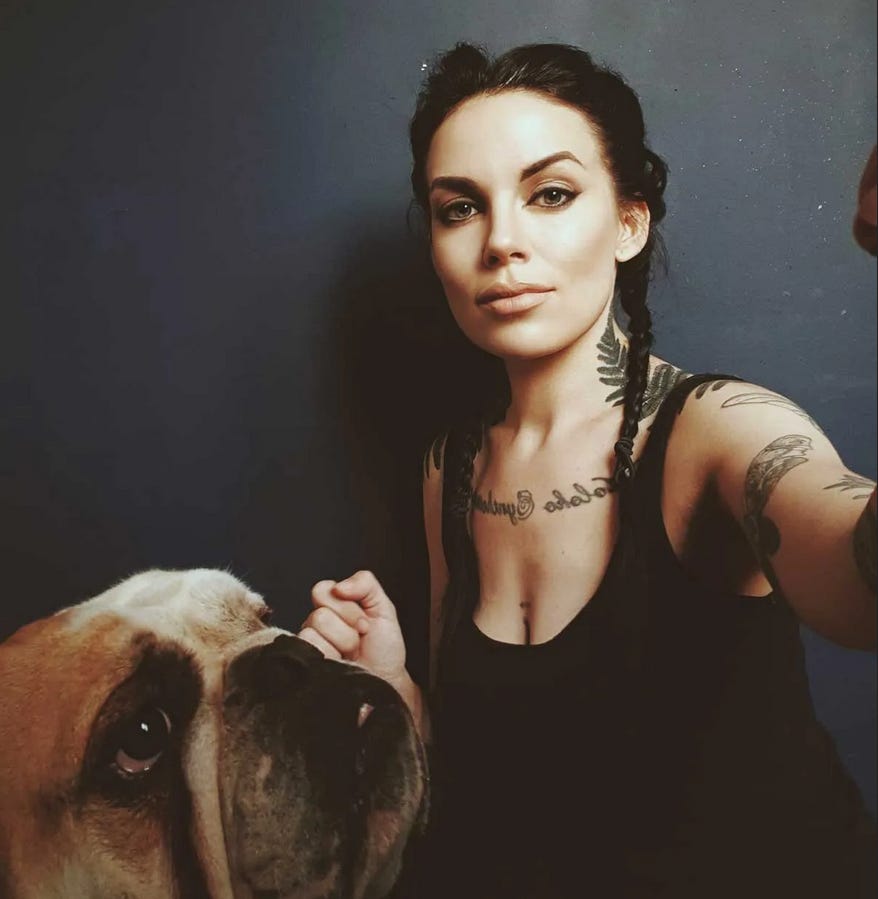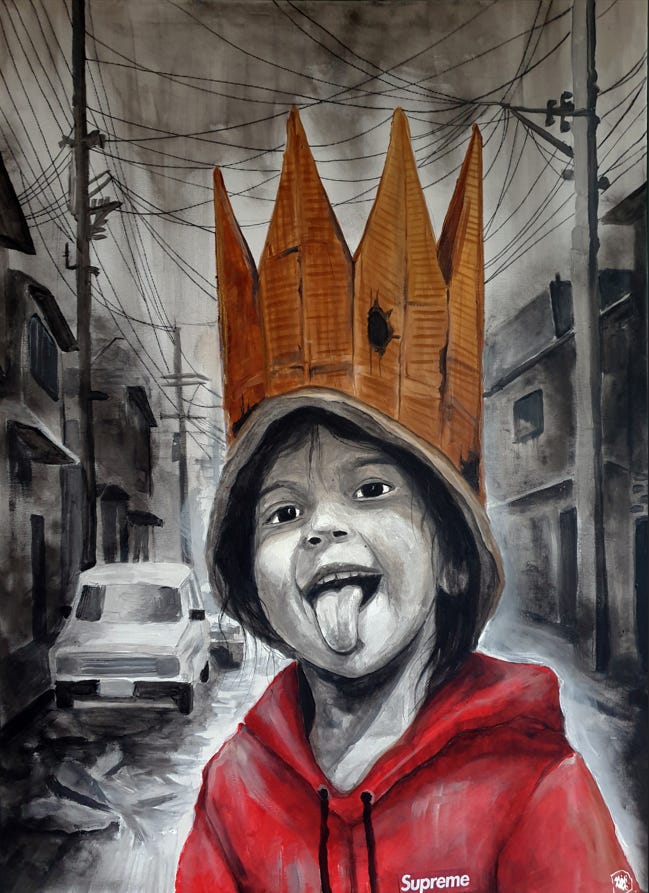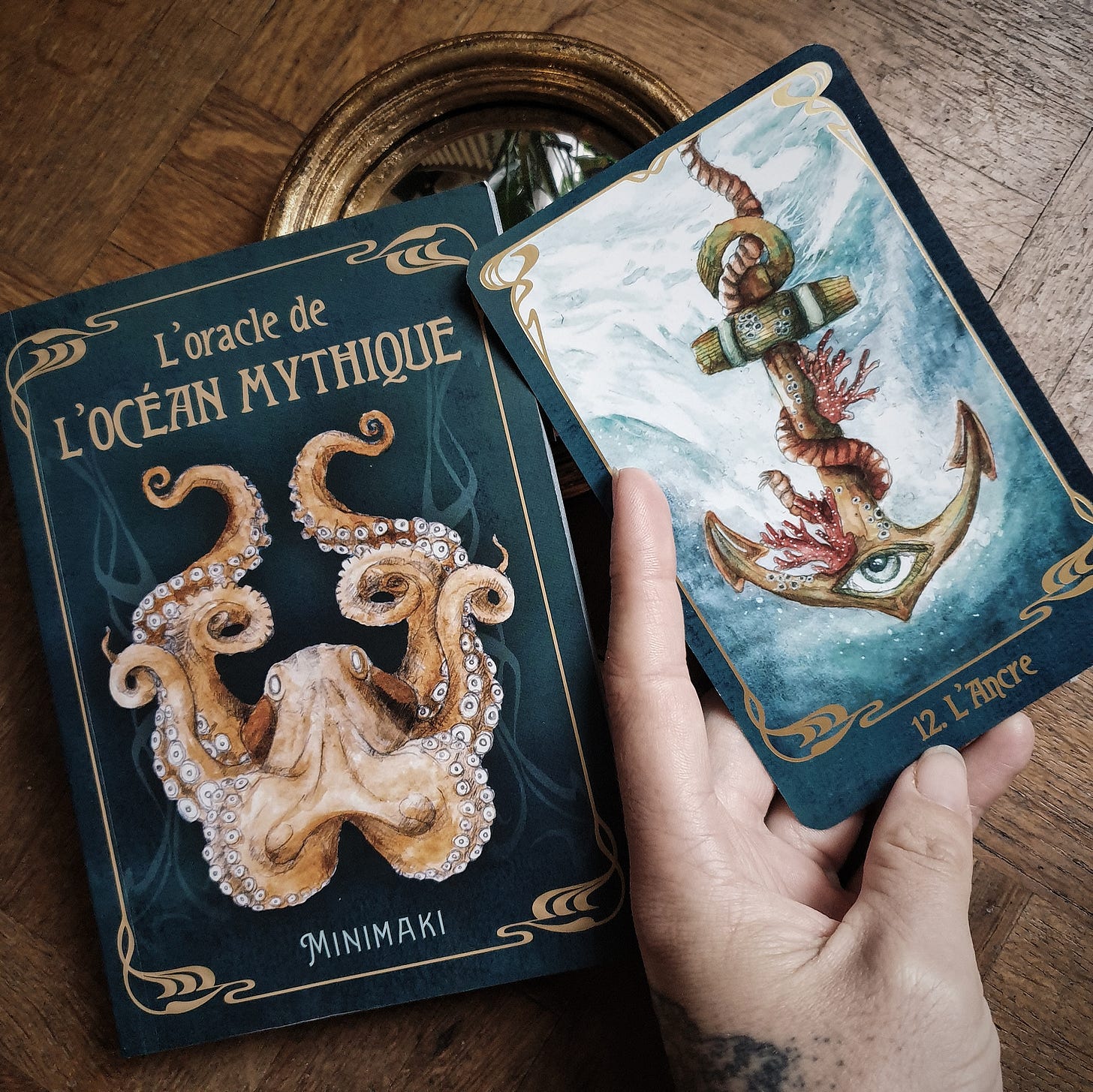Artist Cove Q&A: MINIMAKI
learn more about MINIMAKI through dipity's monthly art interview spotlights
Introduction
Marine, also known as MINIMAKI, is an illustrator and, above all, a compulsive sketcher. Whether in her studio, on the subway, or in the forest, she explores every aspect of her environment to tell stories. To express her universe, MINIMAKI works across various surfaces, including paper, cardboard, canvas, and street walls. What matters most is conveying emotion, inviting everyone to venture into her imaginary world. Her lines, which she deliberately keeps rough and raw, are imperfect but very much alive. What counts is their energy. Her illustrations are not meant to be flawless but to vibrate and spark something within the viewer.
Q: What is your name? Where are you from? AND What is your current title in the art world?
My name is Marine, also known as MINIMAKI. I am a French artist and illustrator currently based in Paris. Originally, I come from a small French island in the Indian Ocean: Réunion Island, where I spent my childhood with my family. Later, I moved to mainland France to pursue my studies and immerse myself in the art world.
Q: How did your art journey begin? AND How long have you been at it?
I believe my artistic journey began the moment I could hold a pencil. When I ask my grandmother, who raised me, if I used to draw a lot, she says I spent entire days drawing, mostly animals. I was a solitary child who loved being in the garden with my tools and books. Ever since I was young, I dreamed of "drawing books" or becoming a fighter pilot—but destiny led me to the pencil. Professionally, after studying architecture, fine arts, and earning a university degree in art history and archaeology, I've been working as a full-time illustrator for the past six years. I create for myself, for publishing houses, and to design new objects—always intuitively and with joy. My work isn't a constraint; it's a way of life.
Q: What do you use to create your artwork on a day-to-day basis?
I love capturing moments anywhere, which means I always carry a sketchbook and a mechanical pencil. My lines are dynamic, never perfect, but they reflect a kind of artistic blur that inhabits my mind. I enjoy drawing sensations more than literal representations. Professionally, I often use fineliner pens with very fine nibs to capture details before they vanish in motion. For color, I primarily use watercolor, which offers a freedom of tone. I don’t like flat color fills—I need volume and light in my work.
Q: How long does a typical artwork take you to complete? AND Describe your process.
A simple sketch from nature or urban life can take just a few minutes. For more developed drawings, I can work several hours. Everything starts with a rough idea in my "ugly sketchbook"—a space where I break down barriers and draw freely, without fear of making mistakes. Then I work on the composition separately, imagining a scene with specific angles, analyzing contrasts and light. That’s when the more "geometric" process begins. The final illustration still leaves room for spontaneity and may diverge from the initial sketches depending on my emotions. A book cover can easily take up to 35 hours, though rarely more, as I am impatient and tend to lose interest quickly. I thrive on novelty and spontaneity, so I work fast and with emotion.
Q: What’s your favorite project you’ve ever worked on thus far?
That’s a great question, but I don’t have a clear answer. Right now, I’m working on illustrations based on H.P. Lovecraft’s short stories, which transport me to an incredible universe. It feels like stepping outside reality into a new dimension I can explore freely. Beyond illustration, I also love continuing my research in art history and archaeology. Writing and illustrating my own books has been a major accomplishment—not just as an illustrator, but also as a researcher. These personal projects reflect who I am completely.
Q: Where do you draw inspiration from for your art? AND Who has inspired you over the years?
When I create, I build my own safe universe. I don’t just look at things—I feel them. For example, when illustrating Nathaniel Hawthorne’s The Scarlet Letter, I immersed myself in the atmosphere of 17th-century life: the sounds, the fog, the puritanism. I watched films like The Village (2004) for its eerie, misty feel. I listen to music that evokes oppressive emotions and find joy in that immersive experience. Cinema inspires me deeply—films by Lynch, Kubrick, and Guillermo del Toro blend colors, sound, and unique scenes. Books also take me to other worlds and fuel my imagination. There’s nothing like isolating yourself in a library to create new universes.
Q: Out of all your artworks, which is your absolute fave? AND Why?
My favorite series is Slummy Tales. It reflects something deeply personal. I didn’t grow up with many opportunities to be seen in the art world. I lived on a small island in a tiny tin house near sugarcane fields and a beach—there was so much to explore. Personal and family events led me to retreat inward. I built worlds with drawings, cardboard, forts, and hours of imagining different lives.
I could bring a stick to life and be satisfied. I talked to objects and wanted to conquer a world I invented. Slummy Tales is a retrospective of children who grow up with little but create everything from nothing. The greatest freedom is imagination.
Q: Are there exciting upcoming projects or events you’d like to share with us?
I’m continuing my painting series and hope to organize an exhibition around it. I’m also working on publishing projects, including an English edition of my oracle deck L'Oracle de l'Océan Mythique, which will be released in the U.S. by Schiffer Publishing in 2026.
Q: What are some fun facts about yourself or hobbies that you have outside of art?
I love visiting cemeteries. Each grave has a unique story, and the calmness and serenity of these places move me. The Père Lachaise Cemetery in Paris is incredible—its architecture, the details, the symbols, and the vegetation reclaiming the stone make it a magical place for me.
Q: What was the last song you listened to?
While illustrating Lovecraft's stories, I've been looping music by David Lynch. The last track I listened to was “Imaginary Girl.”
Q: What’s one movie or book that we should check out?
Barry Lyndon (1975) by Stanley Kubrick is and will always be my ultimate film.
Q: How do you typically get out of artist block?
Honestly, I don’t experience creative blocks. As mentioned before, I keep several sketchbooks for different levels of work. Many people get blocked because they imagine the final result before they even feel it. What’s most beautiful and innocent are those little doodles we make absentmindedly, like while on the phone. I keep a sketchbook just for that—not to be beautiful, just to exist.
Q: Lastly, what advice or tips would you give those wanting to pursue art as a career?
Stop comparing yourself to other illustrators. Build your own culture. Art isn’t just about visuals—there are smells, sounds, and inner worlds. It’s discouraging to look at others and think, "I could never do that." Good! You’re not supposed to. Cultivate your own inner plant, your favorite colors, your unique line. That’s where your individuality will shine. Feel what you see—if you go to a zoo and observe a fierce animal with bristling fur, maybe your lines should feel "electric." What about its gaze? How do you reflect its spark? What does the smell remind you of? Something earthy and primitive? Maybe it calls for symbols, something archaic and secret. Telling a story through all your senses will make your imagination limitless.
To Check Out More of MINIMAKI’s Work, Visit:
Instagram: @minimaki_design
Website: https://www.minimakidesign.com/
Purchase MINIMAKI’s Work Also At: [Etsy Here]
Any other thoughts, comments, or shares after reading the interview?
[Interview Processed By VFORROW]
Thank you so much, Marine, for sharing and submitting to Dipity Lit Mag!
~ Jazz Marie Kaur.
We appreciate anyone who takes the time to comment, subscribe here, pledge support to our Substack, donates directly to help fund future community projects on our website, visits the gift shop, or buys us coffee or tea over there. Stay tuned for more Substack shares and interviews. Thanks again for your support and have awesome days ahead!















Great article!
Ahhh a fascinating read. I’m so excited to know this artist!